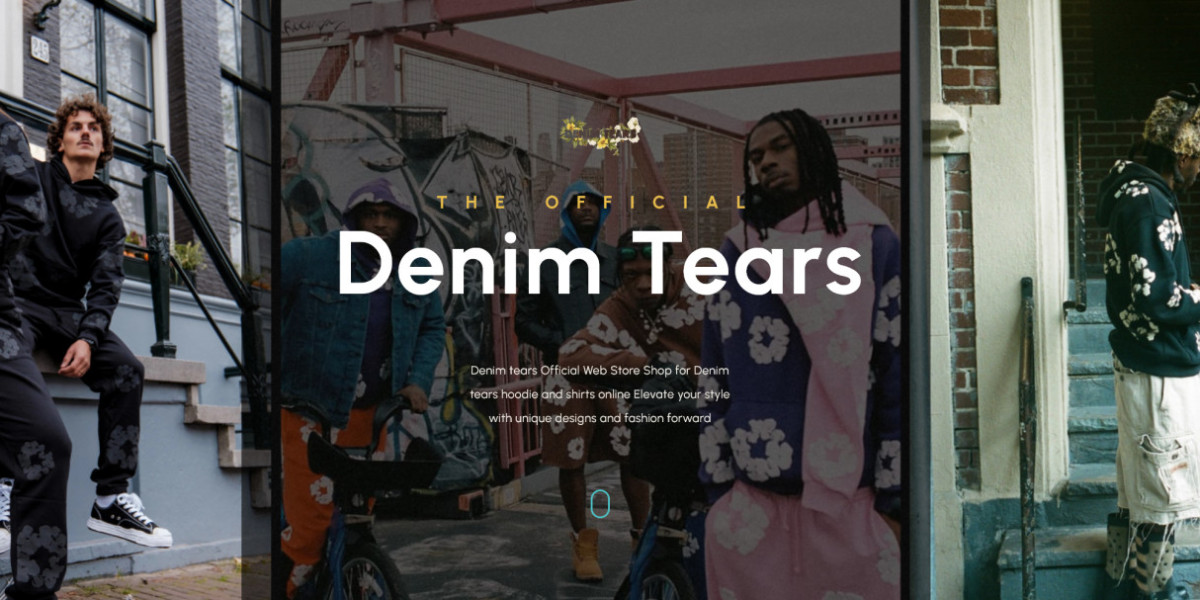Denim has always been more than just a piece of clothing. It's been a working man’s uniform, a teenager’s rebellion, and an artist’s canvas. It ages with you, stains with your history, and tears under your pressures. But in recent years, a particular brand and concept—Denim Tears—has emerged from this cultural fabric, weaving together narrative, identity, and resistance. Denim Tears, founded by Tremaine Emory, is not simply a fashion label. It is a living, breathing conversation with the past, stitched together with the threads of the African diaspora, American history, and personal expression.
The Birth of Denim Tears: A Brand Rooted in Legacy
Tremaine Emory, the mind behind Denim Tears, is more than a designer. He is a storyteller. As a cultural commentator and creative force, his work with the likes of Kanye West, Virgil Abloh, and Frank Ocean gave him an insight into how art, fashion, and identity intersect. But Denim Tears was his return home—a personal and public confrontation with Black identity in America through the lens of fashion.
The brand officially launched in 2019 with its first collection, which featured denim pieces emblazoned with cotton wreaths. It was a striking and deliberate image. Cotton, a fabric so deeply intertwined with slavery and exploitation, became a symbol of reclamation. Emory wasn’t just making jeans. He was making a statement. Through Denim Tears, he asked: What does it mean to wear your history? How do you carry the past without being crushed by its weight?
Cotton Wreaths and Cultural Reckoning
Denim Tears’ signature motif—the cotton wreath—is as beautiful as it is unsettling. To many, cotton symbolizes the atrocities of American slavery. Plantations, forced labor, and generational trauma are woven into its fibers. By placing this symbol front and center on denim, Emory challenges consumers to confront the uncomfortable legacy they might otherwise forget.
The cotton wreaths on Denim Tears jackets and jeans are more than designs; they are memorials. They represent ancestors, stories silenced, and pain endured. But they also symbolize resilience. They show how, even through exploitation, beauty can be reborn. This reappropriation of symbols makes Denim Tears not just wearable art, but also wearable protest.
Fashion as Protest, Not Just Aesthetic
What separates Denim Tears from the waves of streetwear brands is its foundation in activism. Fashion has always been political, but Emory doesn’t bury his message beneath layers of trend. He puts it front and center. Every collection is grounded in history and meaning. The use of classic Levi’s silhouettes connects his work to Americana—jeans being arguably the most iconic piece of American clothing—while his reinterpretation of them roots them in the Black experience.
Rather than follow fashion’s usual seasonal pace, Denim Tears drops collections when there is something to say. This slow, intentional pace flies in the face of fast fashion and hyper-commercialization. It ensures that each garment is more than a product. It’s a story, a conversation starter, and a statement piece. Emory’s designs don’t chase relevance—they create it.
The Denim as a Diary
A torn pair of jeans often tells a story—a ripped knee from a fall, a frayed hem from years of wear, or a faded pocket from a cherished item. In Denim Tears, that metaphor is made literal. Each piece is designed to be worn and weathered, to gather stories, to become personal history.
Wearing Denim Tears is like carrying a diary on your body. It’s intimate and public at once. The narrative starts with Emory’s vision, but it continues with the wearer’s journey. It is clothing meant to absorb life—not just drape over it. The deliberate aging, tearing, and distressing of denim mirrors the human experience. We are shaped, scarred, and made unique by the pressures of life. So too is denim.
Collaborations as Cultural Commentary
One of the most powerful aspects of Denim Tears has been its collaborations. Rather than seeking corporate partnerships for profit, Emory collaborates with artists, historians, and institutions that align with his vision. His partnership with Converse, for example, reimagined classic sneakers through the lens of civil rights history and Black cultural contribution.
These collaborations expand the reach of his message while staying rooted in integrity. Emory understands that fashion is a language, and he uses it to speak truth, challenge narratives, and educate. His work isn’t about nostalgia; it’s about reconstruction. He takes symbols of oppression and reshapes them into emblems of pride.
The Intersection of Pain and Pride
Perhaps what makes Denim Tears so emotionally resonant is its ability to hold space for both grief and pride. It doesn’t shy away from the horrors of history, but it also doesn’t collapse under them. Instead, it holds them up alongside moments of brilliance, creativity, and joy. This duality is vital to the Black American experience, and Emory captures it beautifully.
The denim tears—both literal and symbolic—represent the breaking points and the breakthroughs. They are reminders that pain has shaped us, but they are also proof that we are not defined by it. The tears are not weaknesses; they are the openings through which resilience shines.
A Movement in the Making
Denim Tears is not just a brand; it is a movement. It sits at the crossroads of fashion, memory, and resistance. It forces the fashion world to reckon with its often sanitized narratives and asks consumers to think about what they wear and why. It also serves as a blueprint for how fashion can be a platform for truth-telling, healing, and empowerment.
Tremaine Emory’s vision is clear: clothing should have conscience. Style should not be silent. In a time when trends move faster than truth, Denim Tears slows things down. It invites us to remember, to reflect, and to act.
Conclusion: Worn Histories, Future Paths
In a world increasingly obsessed with the new, the polished, and the perfect, Denim Tears embraces the torn, the worn, and the historical. It reminds us that beauty is Denim Tears Sweatpants often found in imperfection—and that fashion can be a force for reckoning as well as celebration.
To wear Denim Tears is to wear your history on your sleeve—literally. It is to accept the burden of the past and carry it forward with dignity. It is a call to remember, but also a call to build something better. With every stitch, every tear, and every cotton wreath, Denim Tears makes one thing clear: the stories in our seams matter.








